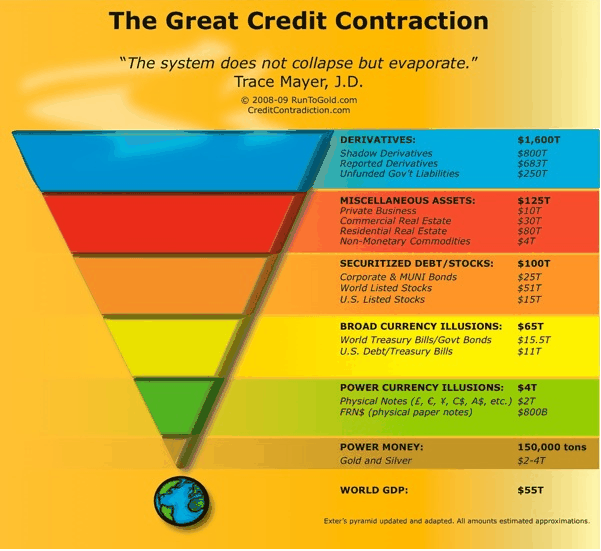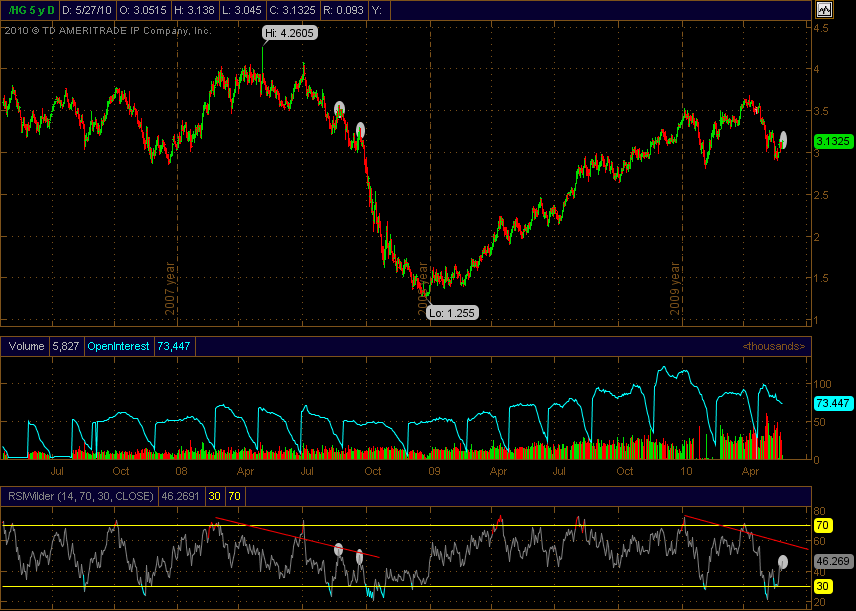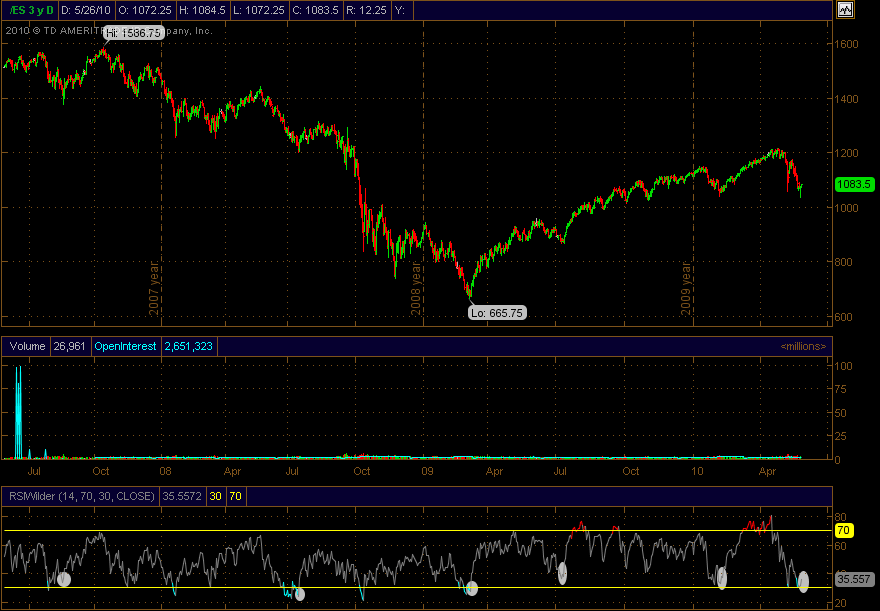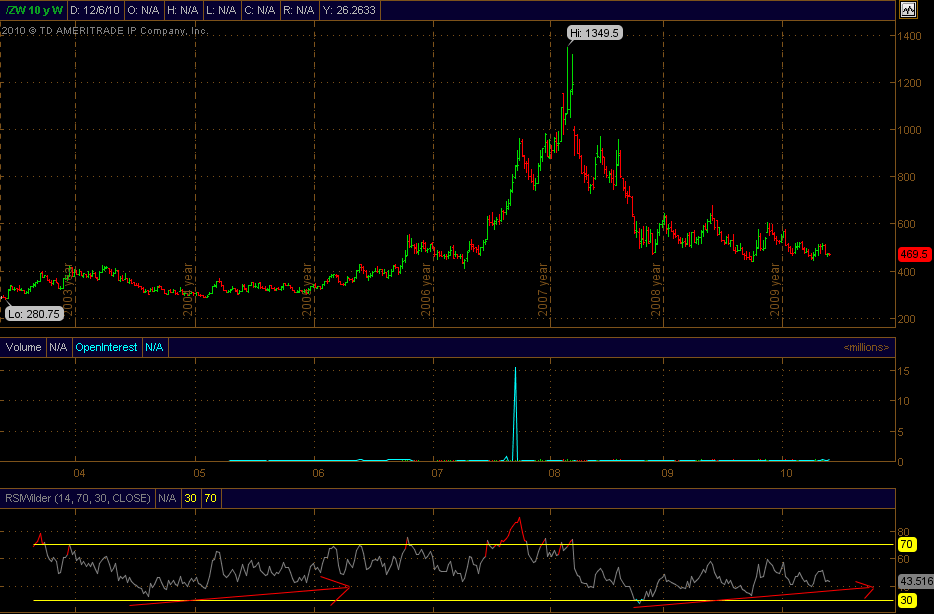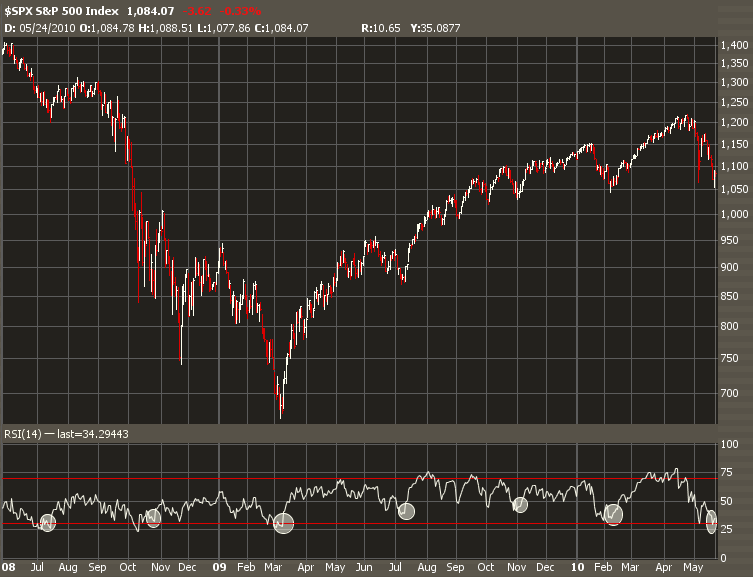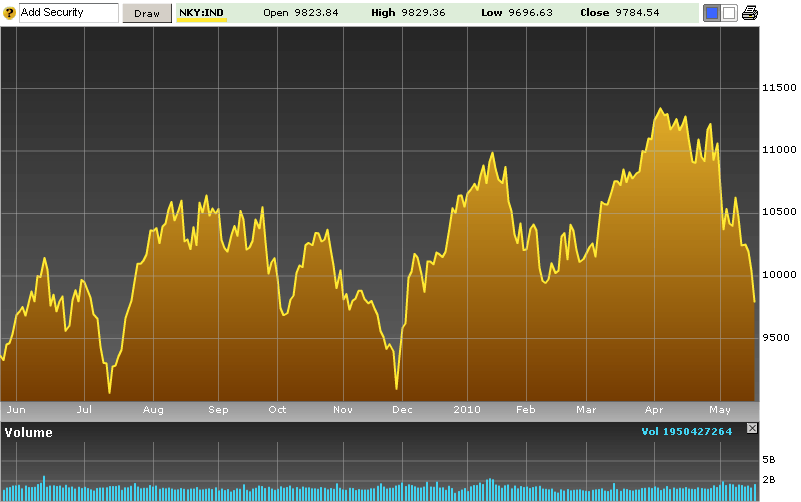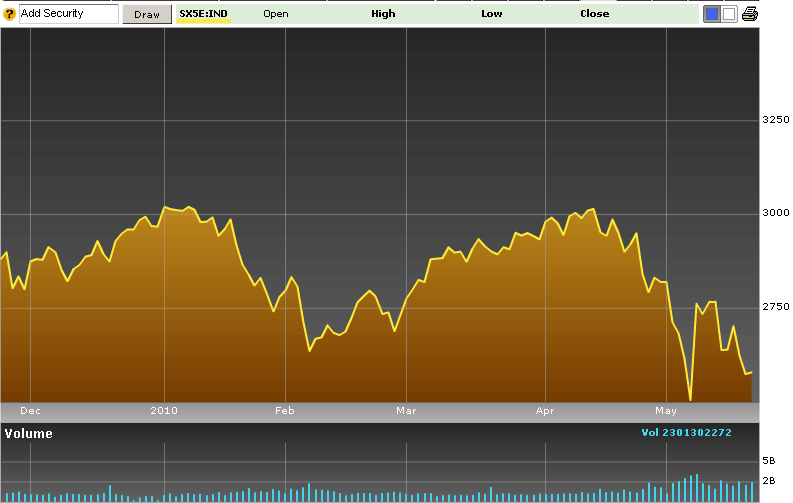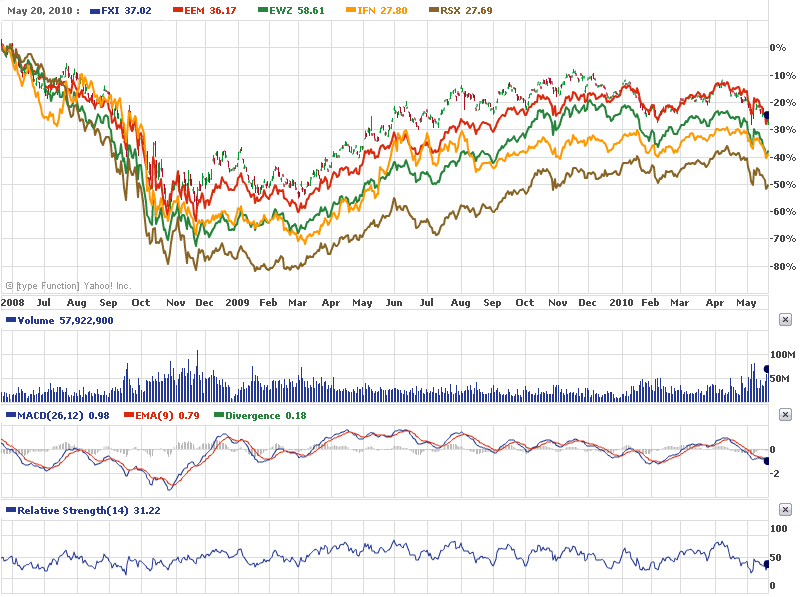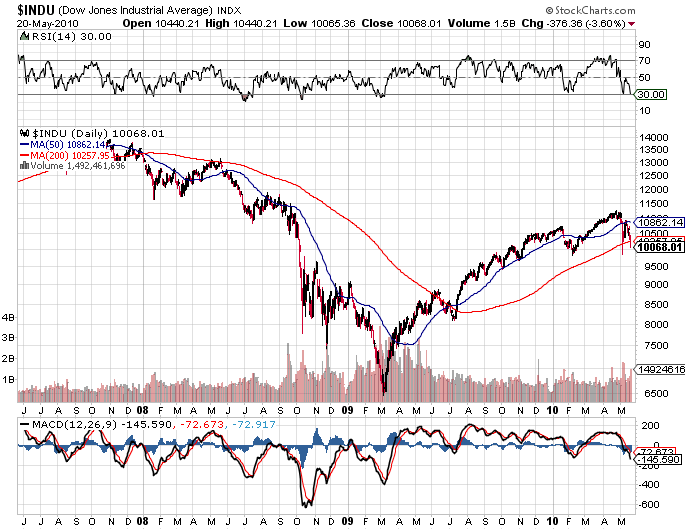Commodities did spectacularly well from winter 08-09 to winter 09-10. Many tripled in price, such as oil, copper and palladium. The world seemed convinced that another great phase of inflation was underway or would start real soon now.
The reality is that demand is anemic and that there has been little or no economic growth. The only exceptions are property bubbles in China, Australia and Canada that are just running on fumes, where America’s was circa 2006. The commodity bounce was purely a technical reaction from an extremely oversold condition, exacerbated by mistaken faith in Keynesian policies deployed worldwide. The rally began to stall out from mid-autumn to this March, and is now starting to roll over in force.
Here’s a 3-year chart of copper, a very liquid and widely followed market. Many believe it is an economic guage, but this is nonsense IMO, since it was trading well under a dollar as the economy was booming a decade ago, and like a lot of other commodities was very expensive in the stagnant 1970s (and right now of course). Prices are driven first and foremost by fads. Why else would you expect it to trade at $3.50 in the middle of a deflantionary depression when stockpiles are huge?
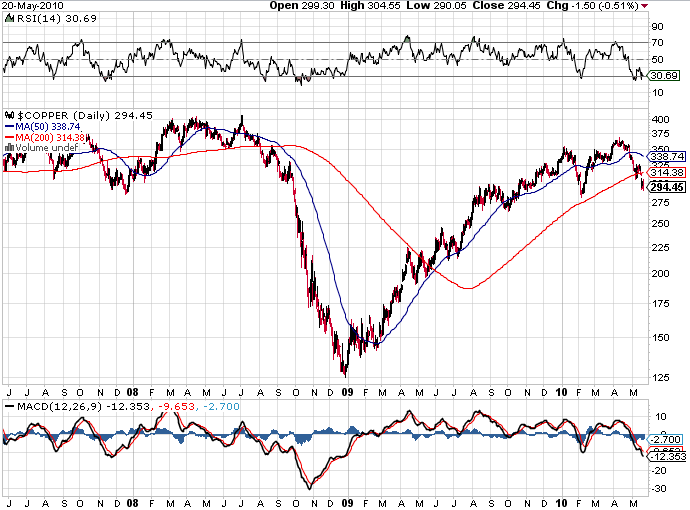
Stockcharts.com
I don’t like to brag, since I get plenty of timing wrong, but back in April I noted the divergence in RSI and MACD right as copper made its top around $3.60.
Another favorite guage of risk appetite is the silver:gold ratio, which has remained stalled for the better part of a year now, and looks set to decline again:
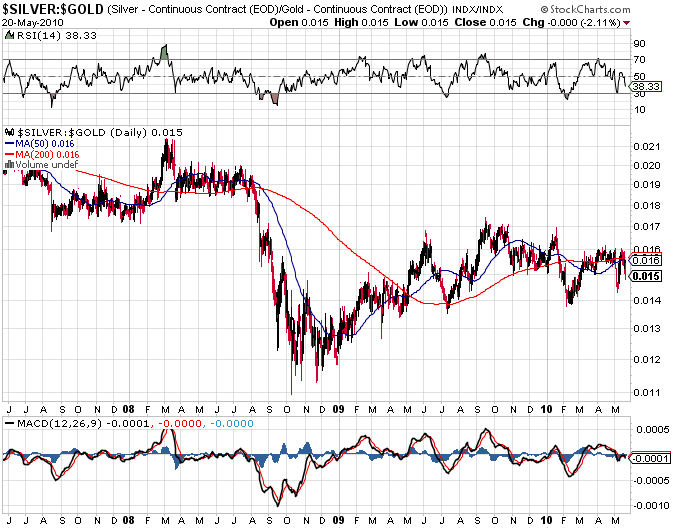
Stockcharts.com
Also check out the palladium:gold ratio, since palladium experienced a major speculative bubble lately which has started to crash very hard:
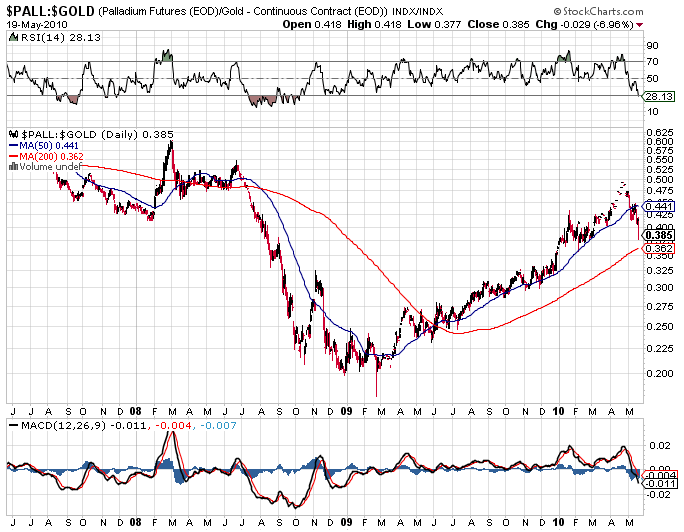
-
Here’s oil, West Texas Intermediate… in all of these commodity charts, note the severity and unrelenting nature of the last drop in 2008. There were few rallies where one could safely get on board for a short sale — you were either short from the top for the ride of your life or just had to watch.
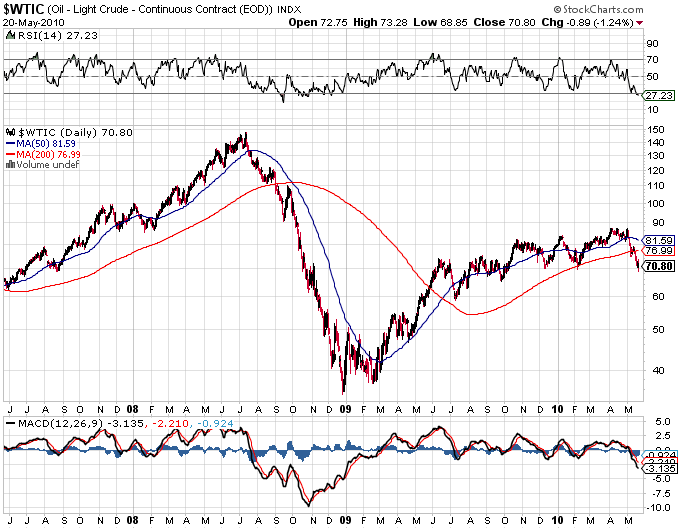
-
I’m not expecting a lot of chop in these markets. I’d love a nice rally here to increase short positions, but it’s not the nature of commodities to take their time on the way down. Traders had months to see this trade coming and set up shorts, but for those who don’t over-leverage themselves it is by no means too late to get on board.
By the way, the commodity currencies (Australian, New Zealand, Canadian dollars, Brazilian Real and South African Rand) have also started to fall hard but have a long way to go to correct their rallies from last winter.
Want to see one commodity market that we’re definitely not too late to short? Gold and silver mining stocks (GDX ETF below). The gold bugs have been extremely confident and their ranks have swelled lately, so a deep set-back is much needed in this sector. After all, mining stocks often have a greater correlation with the S&P 500 than with the gold price (which I expect to fall, though not as much as stocks).
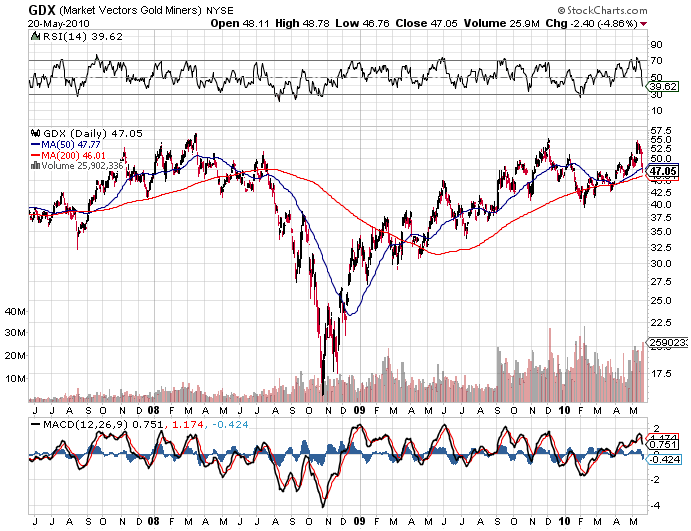
-
Ironically, I’m part of a group that’s building a huge database and stock screener in this space, called the Mining Almanac. Launching our beta site right at the top of a commodities bubble couldn’t be worse timing, so I’m trying to make lemonade and using it to search not for value stocks (what I designed it for) but the opposite so that I can short them!
For safety, don’t buy gold stocks, which are a financial asset with value contingent upon stock market conditions, tax laws (seen in Australia lately as their leftist government has slapped an extra tax on the mining industry) and myriad operational concerns. Along with plenty of cash and treasury notes, buy gold itself, either stored in your name in a vault oversees or in your personal posession. Gold is money, and in a deflationary depression with undertones of currency crisis, you want the very best.
